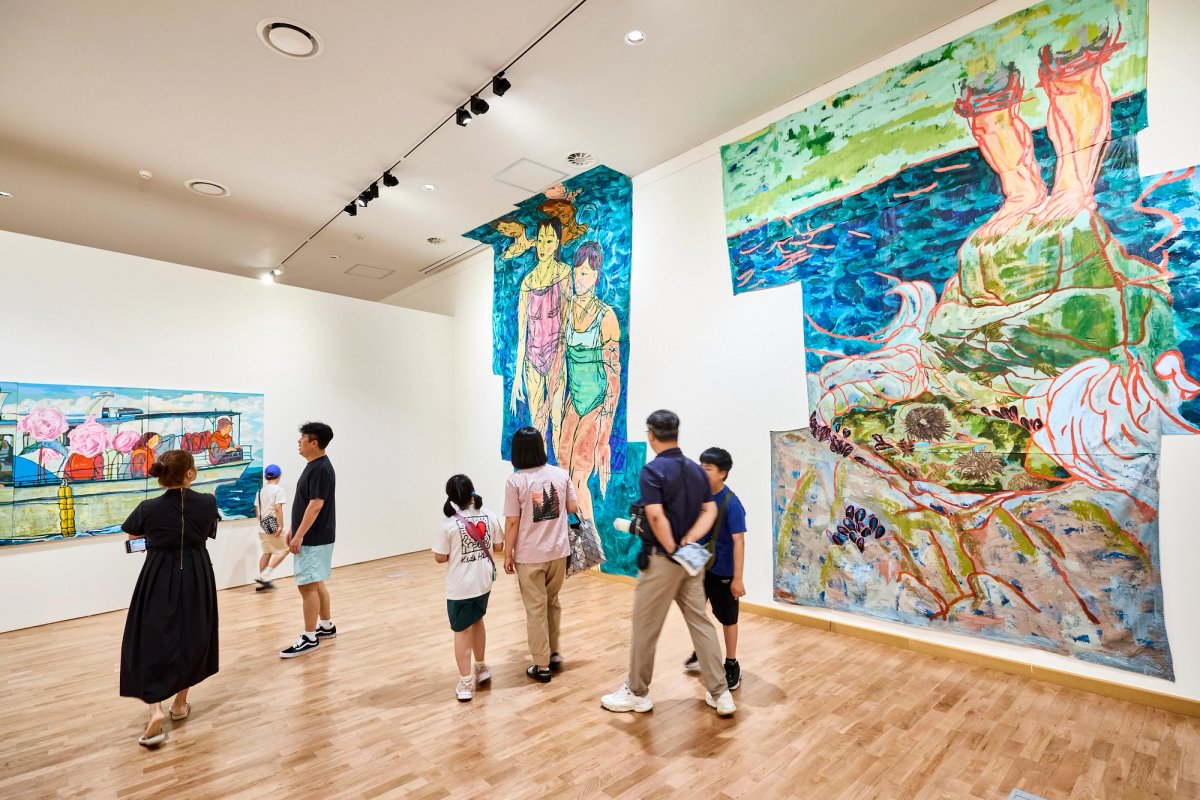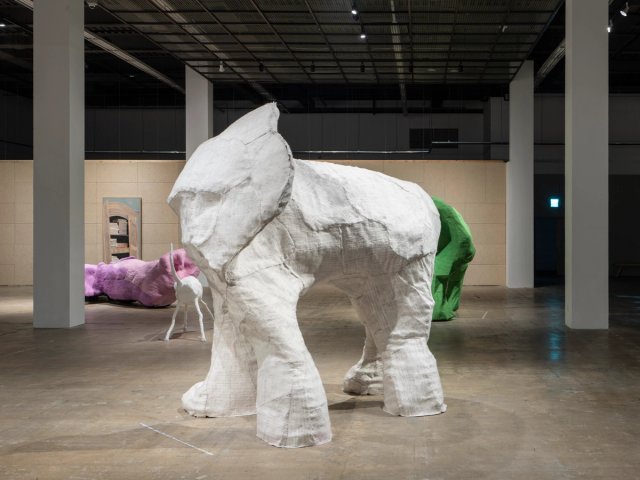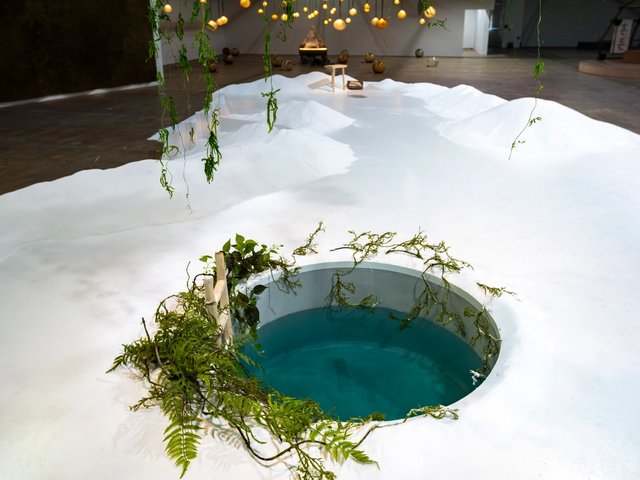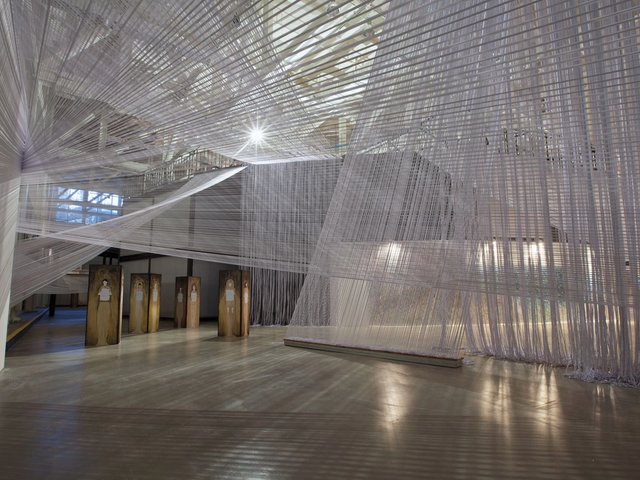Stretch marks rarely appear in art. That purported disfigurement so integral to human life does not receive the schmaltzy, greeting card treatment poured onto the more romanticised aspects of motherhood.
Yet, at the 2024 Busan Biennale (until 20 October), instead of the usual symbolic or cosmetic erasure, the artist Han Mengyun’s own stretch marks are enlarged on-screen. In her video installation Night Sutra (2024) the marks are shown as something neutral or even celebratory, before being rubbed with the same egg and ink that treat the Dong textiles she drapes around the three screens.
Han’s intimate, four-country intertwining of Buddhism’s legacies of misogyny with her own religious disillusionment and postpartum depression is among a handful of works in the biennial that engage with both of the exhibition’s subtopics. The co-curators Vera Mey and Philippe Pirotte, with associate Suzy Park, split the overarching theme of Seeing in the Dark into branches about Buddhist ideals of displacement and the autonomous pirate utopias envisioned by the late anthropologist David Graeber.
“Gender balance was front and centre, and David Graeber’s work includes the impact of women’s work,” Mey says. The curator describes Night Sutra as among many new works and commissions on display. “There is a strong history of Korean biennials, so it’s important to show something new,” she explains.
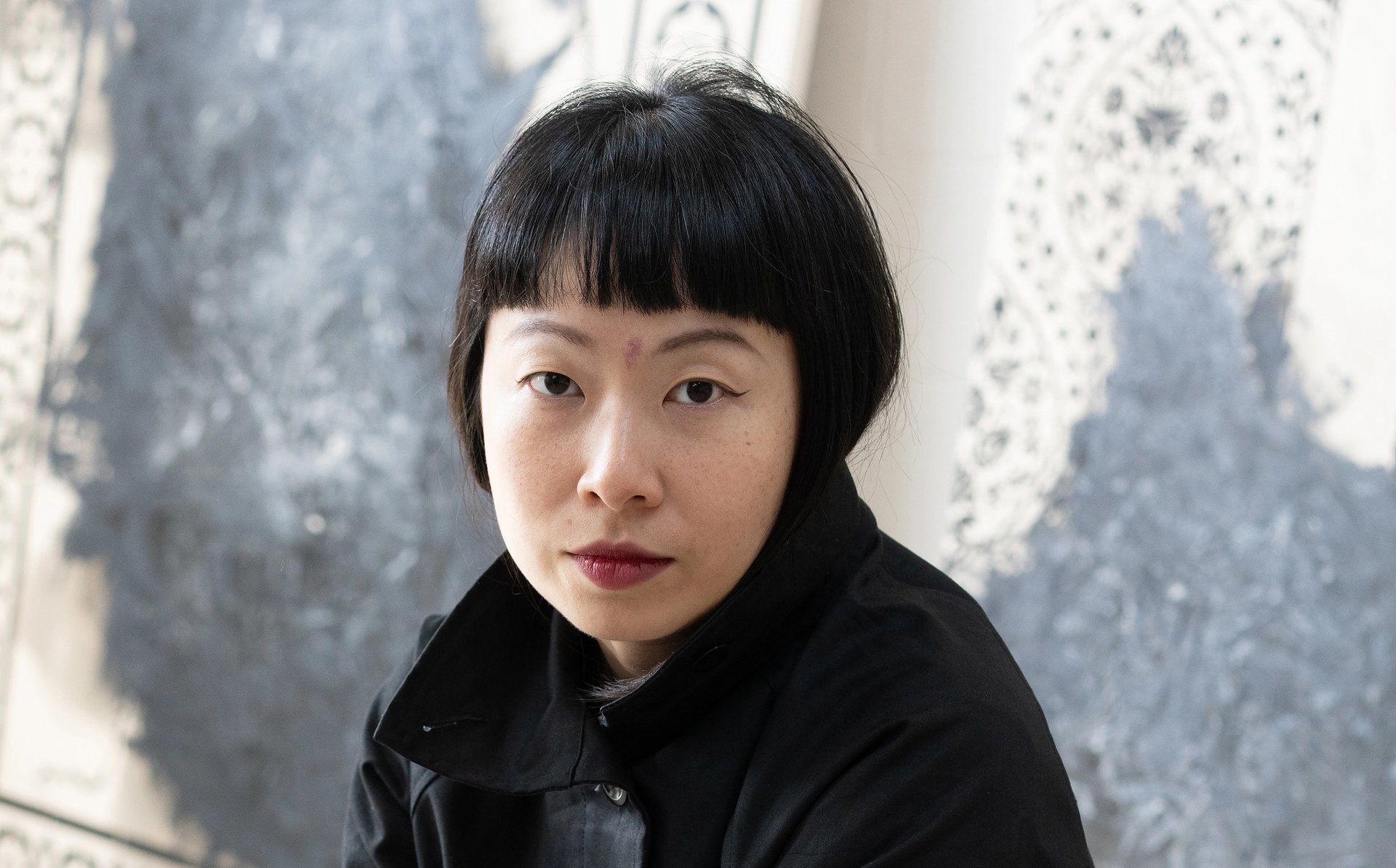
In Seeing in the Dark, the piracy and Buddhism motives do find overlaps, from Busan’s density of Buddhist temples, to the marketing motif of a ship wheel as a dharmachakra. At their best, the two frameworks provide layers and lenses of consideration for striking new paths and challenging orthodoxies. The result is an exhibition of largely excellent, engaging works, many creating their own discourses, but that overall feels refracted.
Those dialogues include a thread between Han’s video installation and Yun Suk-nam’s Women of Resistance (2020-2023)—17 striking portraits of women instrumental in Korea’s independence and democracy struggles. In the land of K-beauty conformity, where no monolid or wrinkle is left untamed, the distinctive craggy faces of Yun’s historical heroine’s have a boldness beyond the direct stares of the Joseon Chaesaekwa court painting tradition her series continues.
Only some of the individuals from a series of over 57 will be familiar to the average Korean, and fewer if any to foreign viewers. With each woman, the completed formal portrait is joined by two preparatory sketches, many of them depicting varying ages and stages of her life.
Throughout Asia, the older women known as "aunties" are an intimidating force. Nail-tough, competent and intimidating, they are kept down only by misogyny—both societal and internalised. Their stories remind us how, for half of humanity, resistance has never been optional. The fluff and sparkles of girl power have a diminished glimmer in society’s current gloom. Instead, let the pragmatic power of the unnie (older women) and ajuma (aunties) show us how to survive.
Generally, the Busan Biennale evades the explicit political tie-ins of Korea’s other main biennial in Gwangju. However, histories including the 1987 torture of the student Park Jong-chul, whose death sparked pro-democracy protests, have their own salience.
Concurrent to Busan Biennale’s opening last month, its peripheral venue the Busan Modern and Contemporary History Museum also held a festival celebrating the city’s heritage as a 20th-century domestic refugee haven. Such local contexts were, however, omitted in favour of more national narratives, such as Koo Hun-joo’s portraits of Korean politicians graffitied into cartoon pirates, on show in the history museum’s basement.
Most recognisable of the defaced figures is the impeached former president Park Geun-hye, the daughter of one of Korea’s old military dictators. The protests against her are depicted in Shin Hak-Chul’s Korean Modern History – Candlelight Revolution (2022), which serves as a reminder that power can be successfully held to account.


